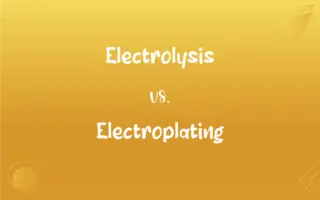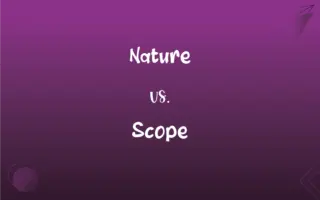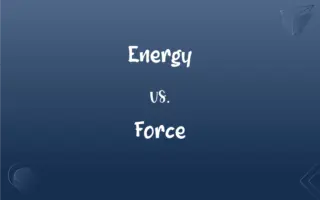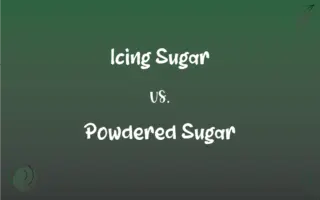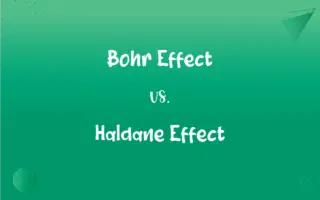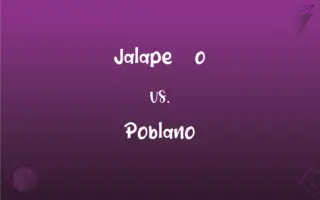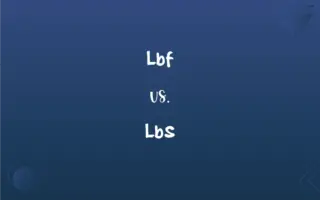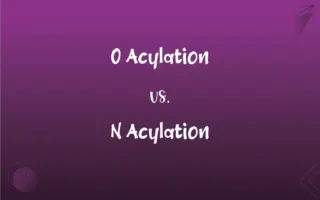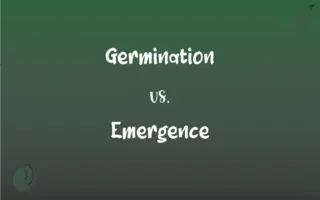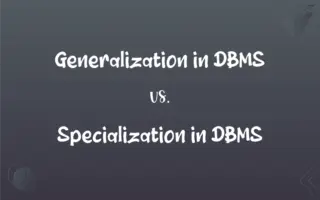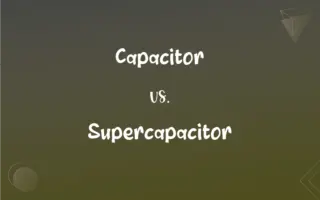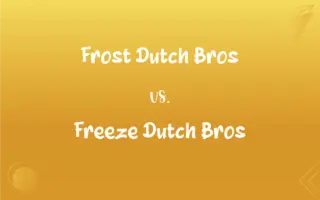Carbon Cycle vs. Phosphorus Cycle: What's the Difference?
Edited by Aimie Carlson || By Harlon Moss || Updated on October 28, 2023
The carbon cycle pertains to the movement of carbon through the atmosphere, land, and oceans, while the phosphorus cycle involves the movement of phosphorus through the biosphere and geosphere.
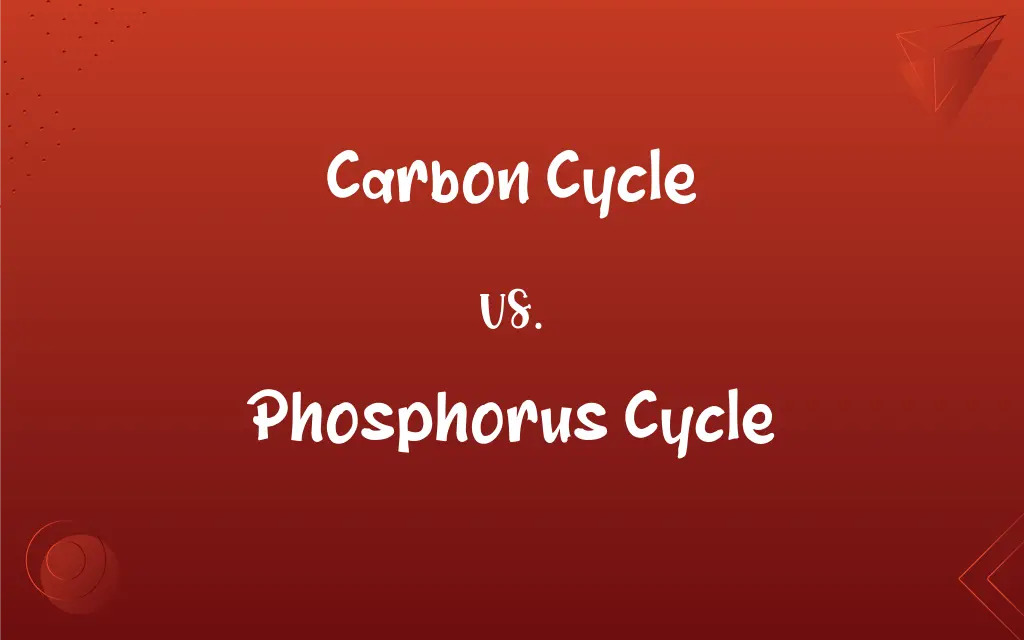
Key Differences
The carbon cycle revolves around the circulation of carbon among living organisms, atmosphere, oceans, and the earth's crust. In the phosphorus cycle, phosphorus travels between the lithosphere and living organisms.
Carbon, in the carbon cycle, primarily moves via photosynthesis, respiration, combustion, and decomposition. The phosphorus cycle doesn't involve the atmosphere, with phosphorus mainly transitioning through weathering, absorption by plants, and sedimentation.
Human interventions like burning fossil fuels severely impact the carbon cycle, leading to increased atmospheric CO2 and global warming. On the other hand, human activities such as agriculture and waste disposal can disrupt the phosphorus cycle by causing excessive nutrient loading in water bodies.
Plants and animals play a crucial role in the carbon cycle, assimilating carbon during photosynthesis and releasing it during respiration. In the phosphorus cycle, plants take up phosphorus from the soil, and it returns to the soil via decomposition or excretion from animals.
The carbon cycle has a strong connection with global climate change due to the greenhouse effect of certain carbon compounds. The phosphorus cycle, while not directly linked to climate, is pivotal for life because phosphorus is a vital component of DNA, ATP, and cell membranes.
ADVERTISEMENT
Comparison Chart
Main Reservoirs
Atmosphere, oceans, and terrestrial ecosystems
Lithosphere and living organisms
Involvement of Gas
Involves gaseous exchanges in the atmosphere
Does not involve a gaseous phase
Human Impact
Burning fossil fuels affects global CO2 levels
Agriculture affects phosphorus levels in water bodies
Biological Importance
Essential for photosynthesis and energy release in organisms
Vital for DNA, ATP, and cell structures
Climate Connection
Directly impacts global climate via greenhouse gases
Not directly linked to climate, but affects ecosystems
ADVERTISEMENT
Carbon Cycle and Phosphorus Cycle Definitions
Carbon Cycle
The process where carbon is recycled and reused throughout the environment.
Deforestation disrupts the carbon cycle by reducing the number of trees available for carbon absorption.
Phosphorus Cycle
The sequence in which phosphorus moves through the biosphere and geosphere.
The phosphorus cycle is essential because of its role in DNA structure.
Carbon Cycle
The flow of carbon among the atmosphere, oceans, and terrestrial biosphere.
Human interventions have significantly altered the natural carbon cycle.
Phosphorus Cycle
The pathway through which phosphorus, an essential nutrient, gets recycled in ecosystems.
Healthy ecosystems depend on a balanced phosphorus cycle.
Carbon Cycle
The continuous movement of carbon in different chemical forms.
The oceans play a pivotal role in the carbon cycle by absorbing large amounts of atmospheric CO2.
Phosphorus Cycle
The natural mechanism that regulates the flow and use of phosphorus in the environment.
Unlike the carbon cycle, the phosphorus cycle doesn't involve the atmosphere.
Carbon Cycle
The sequence of stages through which carbon compounds move in an environment.
The carbon cycle's balance is vital for maintaining Earth's climate stability.
Phosphorus Cycle
The circulation of phosphorus compounds from the environment to organisms and back.
Over-fertilization can accelerate the phosphorus cycle, leading to water pollution.
Carbon Cycle
The pathway through which carbon circulates in ecosystems.
The imbalance in the carbon cycle is the primary cause of global warming.
Phosphorus Cycle
The transfer of phosphorus among rocks, water, and living entities.
Human interventions, particularly in agriculture, can disrupt the phosphorus cycle.
FAQs
What is the carbon cycle?
The carbon cycle is the movement of carbon through the atmosphere, land, and oceans in various forms.
Why is the carbon cycle important?
It regulates global carbon levels, influencing climate and supporting life through processes like photosynthesis.
Why don't we hear about the phosphorus cycle as much as the carbon cycle in climate discussions?
While the carbon cycle directly affects climate via greenhouse gases, the phosphorus cycle's impact is primarily on ecosystems, not directly on climate.
Does the carbon cycle involve the oceans?
Yes, oceans absorb and store a significant amount of atmospheric CO2.
Can the carbon cycle restore balance naturally?
Yes, but current human activities are altering it at a rate that challenges this natural balance.
Why is the phosphorus cycle slower than the carbon cycle?
It mainly relies on geological processes like weathering and sedimentation, which are typically slower than atmospheric processes.
Is phosphorus essential for life?
Yes, it's vital for structures like DNA, ATP, and cell membranes.
Which organisms play a central role in the carbon cycle?
Plants, through photosynthesis, and animals, through respiration, play key roles.
How is the phosphorus cycle different from the carbon cycle?
The phosphorus cycle involves the movement of phosphorus through the biosphere and geosphere, without a gaseous phase.
How does the carbon cycle affect global warming?
An imbalanced carbon cycle leads to increased atmospheric CO2, contributing to global warming.
Why is the phosphorus cycle critical for ecosystems?
It ensures the availability of phosphorus, essential for growth and energy transfer in organisms.
Can disrupting the phosphorus cycle harm water bodies?
Yes, excessive phosphorus can cause water pollution and eutrophication.
Is carbon a greenhouse gas in the carbon cycle?
Carbon, in forms like CO2 and methane, acts as a greenhouse gas.
What's the role of combustion in the carbon cycle?
Combustion releases carbon, primarily as CO2, into the atmosphere.
Is sedimentation part of the phosphorus cycle?
Yes, phosphorus gets trapped in sediments, returning to the lithosphere.
Are human activities disrupting the carbon cycle?
Yes, activities like burning fossil fuels and deforestation alter the carbon cycle.
How do humans impact the phosphorus cycle?
Through agriculture and waste disposal, leading to excessive nutrient loading in water bodies.
Why doesn't the phosphorus cycle involve the atmosphere?
Phosphorus doesn't have a gaseous phase under natural conditions.
Do human interventions in the carbon cycle have consequences?
Yes, they contribute to climate change and affect natural ecosystems.
How do plants fit into the phosphorus cycle?
Plants absorb phosphorus from the soil, using it for growth and reproduction.
About Author
Written by
Harlon MossHarlon is a seasoned quality moderator and accomplished content writer for Difference Wiki. An alumnus of the prestigious University of California, he earned his degree in Computer Science. Leveraging his academic background, Harlon brings a meticulous and informed perspective to his work, ensuring content accuracy and excellence.
Edited by
Aimie CarlsonAimie Carlson, holding a master's degree in English literature, is a fervent English language enthusiast. She lends her writing talents to Difference Wiki, a prominent website that specializes in comparisons, offering readers insightful analyses that both captivate and inform.

